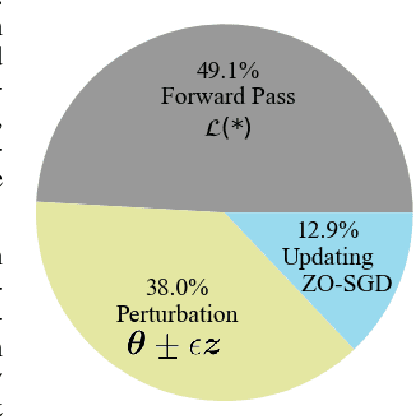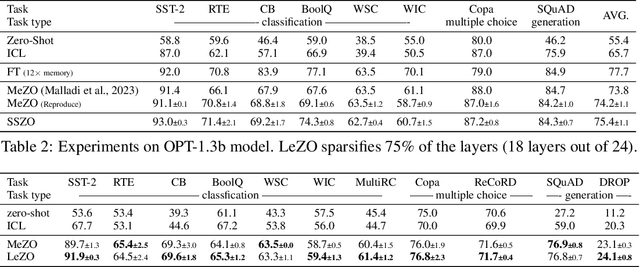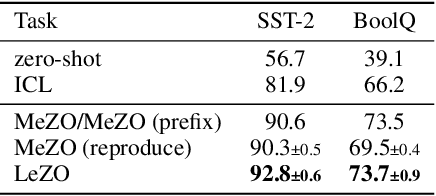Changxing Ding
Guiding Human-Object Interactions with Rich Geometry and Relations
Mar 26, 2025Abstract:Human-object interaction (HOI) synthesis is crucial for creating immersive and realistic experiences for applications such as virtual reality. Existing methods often rely on simplified object representations, such as the object's centroid or the nearest point to a human, to achieve physically plausible motions. However, these approaches may overlook geometric complexity, resulting in suboptimal interaction fidelity. To address this limitation, we introduce ROG, a novel diffusion-based framework that models the spatiotemporal relationships inherent in HOIs with rich geometric detail. For efficient object representation, we select boundary-focused and fine-detail key points from the object mesh, ensuring a comprehensive depiction of the object's geometry. This representation is used to construct an interactive distance field (IDF), capturing the robust HOI dynamics. Furthermore, we develop a diffusion-based relation model that integrates spatial and temporal attention mechanisms, enabling a better understanding of intricate HOI relationships. This relation model refines the generated motion's IDF, guiding the motion generation process to produce relation-aware and semantically aligned movements. Experimental evaluations demonstrate that ROG significantly outperforms state-of-the-art methods in the realism and semantic accuracy of synthesized HOIs.
Effortless Active Labeling for Long-Term Test-Time Adaptation
Mar 18, 2025Abstract:Long-term test-time adaptation (TTA) is a challenging task due to error accumulation. Recent approaches tackle this issue by actively labeling a small proportion of samples in each batch, yet the annotation burden quickly grows as the batch number increases. In this paper, we investigate how to achieve effortless active labeling so that a maximum of one sample is selected for annotation in each batch. First, we annotate the most valuable sample in each batch based on the single-step optimization perspective in the TTA context. In this scenario, the samples that border between the source- and target-domain data distributions are considered the most feasible for the model to learn in one iteration. Then, we introduce an efficient strategy to identify these samples using feature perturbation. Second, we discover that the gradient magnitudes produced by the annotated and unannotated samples have significant variations. Therefore, we propose balancing their impact on model optimization using two dynamic weights. Extensive experiments on the popular ImageNet-C, -R, -K, -A and PACS databases demonstrate that our approach consistently outperforms state-of-the-art methods with significantly lower annotation costs.
Modeling Thousands of Human Annotators for Generalizable Text-to-Image Person Re-identification
Mar 13, 2025Abstract:Text-to-image person re-identification (ReID) aims to retrieve the images of an interested person based on textual descriptions. One main challenge for this task is the high cost in manually annotating large-scale databases, which affects the generalization ability of ReID models. Recent works handle this problem by leveraging Multi-modal Large Language Models (MLLMs) to describe pedestrian images automatically. However, the captions produced by MLLMs lack diversity in description styles. To address this issue, we propose a Human Annotator Modeling (HAM) approach to enable MLLMs to mimic the description styles of thousands of human annotators. Specifically, we first extract style features from human textual descriptions and perform clustering on them. This allows us to group textual descriptions with similar styles into the same cluster. Then, we employ a prompt to represent each of these clusters and apply prompt learning to mimic the description styles of different human annotators. Furthermore, we define a style feature space and perform uniform sampling in this space to obtain more diverse clustering prototypes, which further enriches the diversity of the MLLM-generated captions. Finally, we adopt HAM to automatically annotate a massive-scale database for text-to-image ReID. Extensive experiments on this database demonstrate that it significantly improves the generalization ability of ReID models.
Beyond Human Data: Aligning Multimodal Large Language Models by Iterative Self-Evolution
Dec 20, 2024Abstract:Human preference alignment can greatly enhance Multimodal Large Language Models (MLLMs), but collecting high-quality preference data is costly. A promising solution is the self-evolution strategy, where models are iteratively trained on data they generate. However, current techniques still rely on human- or GPT-annotated data and sometimes require additional models or ground truth answers. To address these issues, we propose a novel multimodal self-evolution framework that enables the model to autonomously generate high-quality questions and answers using only unannotated images. First, we implement an image-driven self-questioning mechanism, allowing the model to create and evaluate questions based on image content, regenerating them if they are irrelevant or unanswerable. This sets a strong foundation for answer generation. Second, we introduce an answer self-enhancement technique, starting with image captioning to improve answer quality. We also use corrupted images to generate rejected answers, forming distinct preference pairs for optimization. Finally, we incorporate an image content alignment loss function alongside Direct Preference Optimization (DPO) loss to reduce hallucinations, ensuring the model focuses on image content. Experiments show that our framework performs competitively with methods using external information, offering a more efficient and scalable approach to MLLMs.
Simultaneous Computation and Memory Efficient Zeroth-Order Optimizer for Fine-Tuning Large Language Models
Oct 13, 2024



Abstract:Fine-tuning is powerful for adapting large language models to downstream tasks, but it often results in huge memory usages. A promising approach to mitigate this is using Zeroth-Order (ZO) optimization, which estimates gradients to replace First-Order (FO) gradient calculations, albeit with longer training time due to its stochastic nature. By revisiting the Memory-efficient ZO (MeZO) optimizer, we discover that the full-parameter perturbation and updating processes consume over 50% of its overall fine-tuning time cost. Based on these observations, we introduce a novel layer-wise sparse computation and memory efficient ZO optimizer, named LeZO. LeZO treats layers as fundamental units for sparsification and dynamically perturbs different parameter subsets in each step to achieve full-parameter fine-tuning. LeZO incorporates layer-wise parameter sparsity in the process of simultaneous perturbation stochastic approximation (SPSA) and ZO stochastic gradient descent (ZO-SGD). It achieves accelerated computation during perturbation and updating processes without additional memory overhead. We conduct extensive experiments with the OPT model family on the SuperGLUE benchmark and two generative tasks. The experiments show that LeZO accelerates training without compromising the performance of ZO optimization. Specifically, it achieves over 3x speedup compared to MeZO on the SST-2, BoolQ, and Copa tasks.
Harnessing the Power of MLLMs for Transferable Text-to-Image Person ReID
May 08, 2024Abstract:Text-to-image person re-identification (ReID) retrieves pedestrian images according to textual descriptions. Manually annotating textual descriptions is time-consuming, restricting the scale of existing datasets and therefore the generalization ability of ReID models. As a result, we study the transferable text-to-image ReID problem, where we train a model on our proposed large-scale database and directly deploy it to various datasets for evaluation. We obtain substantial training data via Multi-modal Large Language Models (MLLMs). Moreover, we identify and address two key challenges in utilizing the obtained textual descriptions. First, an MLLM tends to generate descriptions with similar structures, causing the model to overfit specific sentence patterns. Thus, we propose a novel method that uses MLLMs to caption images according to various templates. These templates are obtained using a multi-turn dialogue with a Large Language Model (LLM). Therefore, we can build a large-scale dataset with diverse textual descriptions. Second, an MLLM may produce incorrect descriptions. Hence, we introduce a novel method that automatically identifies words in a description that do not correspond with the image. This method is based on the similarity between one text and all patch token embeddings in the image. Then, we mask these words with a larger probability in the subsequent training epoch, alleviating the impact of noisy textual descriptions. The experimental results demonstrate that our methods significantly boost the direct transfer text-to-image ReID performance. Benefiting from the pre-trained model weights, we also achieve state-of-the-art performance in the traditional evaluation settings.
Disentangled Pre-training for Human-Object Interaction Detection
Apr 02, 2024



Abstract:Detecting human-object interaction (HOI) has long been limited by the amount of supervised data available. Recent approaches address this issue by pre-training according to pseudo-labels, which align object regions with HOI triplets parsed from image captions. However, pseudo-labeling is tricky and noisy, making HOI pre-training a complex process. Therefore, we propose an efficient disentangled pre-training method for HOI detection (DP-HOI) to address this problem. First, DP-HOI utilizes object detection and action recognition datasets to pre-train the detection and interaction decoder layers, respectively. Then, we arrange these decoder layers so that the pre-training architecture is consistent with the downstream HOI detection task. This facilitates efficient knowledge transfer. Specifically, the detection decoder identifies reliable human instances in each action recognition dataset image, generates one corresponding query, and feeds it into the interaction decoder for verb classification. Next, we combine the human instance verb predictions in the same image and impose image-level supervision. The DP-HOI structure can be easily adapted to the HOI detection task, enabling effective model parameter initialization. Therefore, it significantly enhances the performance of existing HOI detection models on a broad range of rare categories. The code and pre-trained weight are available at https://github.com/xingaoli/DP-HOI.
Texture-Preserving Diffusion Models for High-Fidelity Virtual Try-On
Apr 01, 2024Abstract:Image-based virtual try-on is an increasingly important task for online shopping. It aims to synthesize images of a specific person wearing a specified garment. Diffusion model-based approaches have recently become popular, as they are excellent at image synthesis tasks. However, these approaches usually employ additional image encoders and rely on the cross-attention mechanism for texture transfer from the garment to the person image, which affects the try-on's efficiency and fidelity. To address these issues, we propose an Texture-Preserving Diffusion (TPD) model for virtual try-on, which enhances the fidelity of the results and introduces no additional image encoders. Accordingly, we make contributions from two aspects. First, we propose to concatenate the masked person and reference garment images along the spatial dimension and utilize the resulting image as the input for the diffusion model's denoising UNet. This enables the original self-attention layers contained in the diffusion model to achieve efficient and accurate texture transfer. Second, we propose a novel diffusion-based method that predicts a precise inpainting mask based on the person and reference garment images, further enhancing the reliability of the try-on results. In addition, we integrate mask prediction and image synthesis into a single compact model. The experimental results show that our approach can be applied to various try-on tasks, e.g., garment-to-person and person-to-person try-ons, and significantly outperforms state-of-the-art methods on popular VITON, VITON-HD databases.
Towards Variable and Coordinated Holistic Co-Speech Motion Generation
Mar 30, 2024Abstract:This paper addresses the problem of generating lifelike holistic co-speech motions for 3D avatars, focusing on two key aspects: variability and coordination. Variability allows the avatar to exhibit a wide range of motions even with similar speech content, while coordination ensures a harmonious alignment among facial expressions, hand gestures, and body poses. We aim to achieve both with ProbTalk, a unified probabilistic framework designed to jointly model facial, hand, and body movements in speech. ProbTalk builds on the variational autoencoder (VAE) architecture and incorporates three core designs. First, we introduce product quantization (PQ) to the VAE, which enriches the representation of complex holistic motion. Second, we devise a novel non-autoregressive model that embeds 2D positional encoding into the product-quantized representation, thereby preserving essential structure information of the PQ codes. Last, we employ a secondary stage to refine the preliminary prediction, further sharpening the high-frequency details. Coupling these three designs enables ProbTalk to generate natural and diverse holistic co-speech motions, outperforming several state-of-the-art methods in qualitative and quantitative evaluations, particularly in terms of realism. Our code and model will be released for research purposes at https://feifeifeiliu.github.io/probtalk/.
Local-consistent Transformation Learning for Rotation-invariant Point Cloud Analysis
Mar 17, 2024Abstract:Rotation invariance is an important requirement for point shape analysis. To achieve this, current state-of-the-art methods attempt to construct the local rotation-invariant representation through learning or defining the local reference frame (LRF). Although efficient, these LRF-based methods suffer from perturbation of local geometric relations, resulting in suboptimal local rotation invariance. To alleviate this issue, we propose a Local-consistent Transformation (LocoTrans) learning strategy. Specifically, we first construct the local-consistent reference frame (LCRF) by considering the symmetry of the two axes in LRF. In comparison with previous LRFs, our LCRF is able to preserve local geometric relationships better through performing local-consistent transformation. However, as the consistency only exists in local regions, the relative pose information is still lost in the intermediate layers of the network. We mitigate such a relative pose issue by developing a relative pose recovery (RPR) module. RPR aims to restore the relative pose between adjacent transformed patches. Equipped with LCRF and RPR, our LocoTrans is capable of learning local-consistent transformation and preserving local geometry, which benefits rotation invariance learning. Competitive performance under arbitrary rotations on both shape classification and part segmentation tasks and ablations can demonstrate the effectiveness of our method. Code will be available publicly at https://github.com/wdttt/LocoTrans.
 Add to Chrome
Add to Chrome Add to Firefox
Add to Firefox Add to Edge
Add to Edge